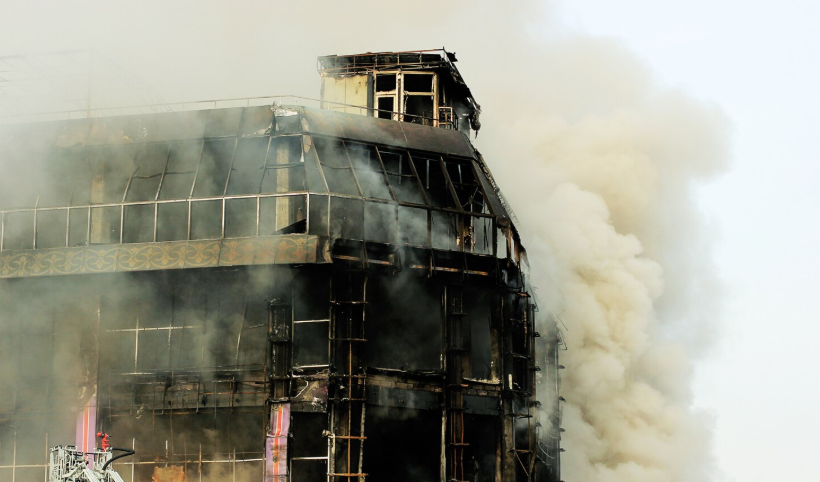By Evi Chrysoheri,
In recent years, the world has witnessed a disturbing surge in extreme weather events, with heatwaves and wildfires becoming increasingly frequent and destructive. No longer confined to a particular region or climate, these phenomena have emerged as global crises that endanger human lives, devastate ecosystems, and place immense pressure on economies and public health systems. From the parched landscapes of California and the Mediterranean basin to the vast stretches of Australia’s bushlands and the forests of Siberia, heatwaves and the fires they often trigger are reshaping both natural environments and human societies.
At the heart of this issue lies the broader challenge of climate change, which has intensified temperature extremes and disrupted long-established weather patterns. Record-breaking heat is no longer a rarity but rather a recurring headline, pushing infrastructure to its limits and exacerbating conditions ripe for fire outbreaks. For many communities, this means grappling with suffocating air quality, mass evacuations, and the destruction of homes and livelihoods. For wildlife, it signals the loss of habitats and the rapid decline of biodiversity. Beyond the immediate devastation, the consequences of these events ripple outward, contributing to food insecurity, water scarcity, and social displacement, while also heightening geopolitical tensions in already fragile regions.

The urgency of addressing heatwaves and wildfires transcends national borders. While some countries are better equipped with advanced firefighting technology or robust healthcare systems, others struggle with limited resources, making the disparity in coping mechanisms starkly evident. Nevertheless, the shared nature of the threat underscores the necessity for collective action: governments, scientists, and communities worldwide must collaborate to build resilience, adapt to changing climates, and mitigate the root causes of these destructive patterns.
The intensification of heatwaves and wildfires is the product of a complex interplay between natural processes and human activities. While high temperatures and dry conditions have always existed in certain parts of the world, the scale and frequency of today’s events cannot be explained by natural variability alone. At the core of this trend lies climate change, driven primarily by the accumulation of greenhouse gases in the atmosphere. The burning of fossil fuels, deforestation, and industrial expansion have all contributed to rising global temperatures, creating conditions in which heatwaves not only occur more often but also last longer and reach unprecedented levels of severity.
Warmer air holds more moisture, which paradoxically dries out soils and vegetation faster, leaving behind landscapes that are highly flammable. This creates a tinderbox effect: once a fire is ignited —whether by lightning, accidents, or deliberate human activity— it spreads with extraordinary speed and intensity. Urbanization and agricultural practices have also played a role, as expanding human settlements push deeper into forested areas, increasing both the likelihood of ignition and the vulnerability of populations. In many cases, outdated land management strategies, such as fire suppression without adequate forest thinning, have left ecosystems overloaded with fuel, further magnifying the scale of modern wildfires.
The effects of heatwaves and wildfires go far beyond the immediate danger of flames or high temperatures. They create a chain reaction that affects people, nature, and the economy in different ways.
First, the impact on human health is severe. Extreme heat can lead to dehydration, heatstroke, and in many cases, death, especially among the elderly, children, and those with medical conditions. When wildfires occur, they also fill the air with smoke and tiny particles that damage the lungs. This worsens breathing problems such as asthma and increases hospital admissions. Entire communities are often forced to evacuate, leaving behind their homes and possessions, which creates emotional stress and long-term trauma.
Second, the damage to nature is often irreversible. Forests that take centuries to grow can be destroyed in a matter of days. Wild animals lose their habitats and many species are unable to survive the sudden changes in their environment. This leads to a serious loss of biodiversity. In addition, the destruction of forests reduces the planet’s ability to absorb carbon dioxide, which in turn fuels climate change even more —a vicious cycle that makes future fires more likely.

The economic cost is also enormous. Wildfires destroy farmland, infrastructure, and businesses, leading to billions of dollars in losses each year. Heatwaves reduce crop yields, strain energy supplies due to high demand for air conditioning, and damage transportation systems such as roads and railways that cannot withstand extreme heat. Countries spend vast amounts of money on firefighting efforts, disaster recovery, and healthcare, which puts a heavy burden on national budgets.
Finally, there are social consequences. When communities are displaced, people may lose not only their homes but also their jobs and way of life. Migration from fire-affected or heat-affected regions can lead to social tension in the areas that receive displaced populations. These challenges show that heatwaves and wildfires are not only environmental issues but also humanitarian and social ones.
Heatwaves and wildfires are no longer distant or rare events; they are becoming part of everyday life for many parts of the world. Their causes are closely linked to human actions and climate change, while their consequences affect health, nature, economies, and societies on a global scale. Addressing these challenges requires urgent cooperation between governments, scientists, and communities. Only through prevention, adaptation, and a stronger commitment to protecting the environment can we reduce the risks and secure a safer future for the generations to come.
Reference
- Explainer: How climate change drives heatwaves and wildfires. Reuters. Available here




